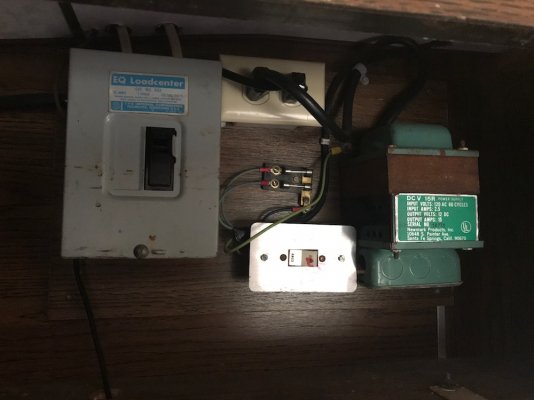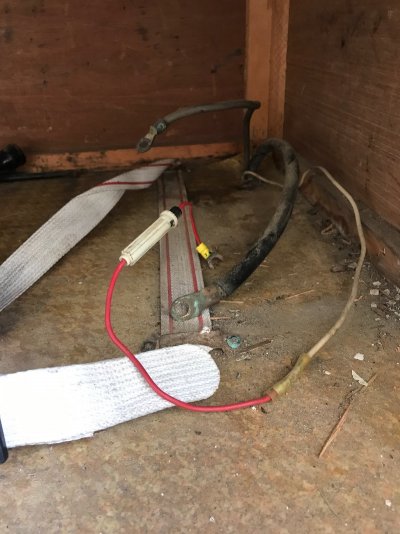lancefb
Member
Hello Folks,
I have a '73-'74 Beaver Class C RV on a Dodge chassis. I have no manual or wiring diagram and I'm trying to figure out how the 12 volt wiring system is put together. I plugged in 120 AC shore power and verified it is working. The receptacles work as far as I can tell. Only one light is AC, which is the external light with a switch next to the door. All the other lights are 12 volt. In the "electrical center" of the RV (pictures attached) there is a switch labeled CONV (converter) and BATT. Plugged into shore power and switched to CONV, everything works - receptacles and lights. Switched to BATT, the lights go off. Not knowing better, I thought the battery that cranks the motor would engage here as I didn't see another battery anywhere when I initially looked. Looking closer I found a battery compartment on the other side of the RV that had stuffed piled where the "house" battery would have lived. In that compartment there are 3 wires coming in: large, medium and small. I take it the large one goes on the positive terminal, and the medium goes to ground (I was able to trace it to a bold on the chassis). But I'm not sure about the small one. It has an inline fuse on it. Before I buy an RV battery to place here I have a few questions.
1) Does the converter in the electrical center include a battery charger and is that what the small wire is for in the compartment?
2) Or, could that small wire be coming from the alternator? Or is it something else.
Thanks in advance for your help.
I have a '73-'74 Beaver Class C RV on a Dodge chassis. I have no manual or wiring diagram and I'm trying to figure out how the 12 volt wiring system is put together. I plugged in 120 AC shore power and verified it is working. The receptacles work as far as I can tell. Only one light is AC, which is the external light with a switch next to the door. All the other lights are 12 volt. In the "electrical center" of the RV (pictures attached) there is a switch labeled CONV (converter) and BATT. Plugged into shore power and switched to CONV, everything works - receptacles and lights. Switched to BATT, the lights go off. Not knowing better, I thought the battery that cranks the motor would engage here as I didn't see another battery anywhere when I initially looked. Looking closer I found a battery compartment on the other side of the RV that had stuffed piled where the "house" battery would have lived. In that compartment there are 3 wires coming in: large, medium and small. I take it the large one goes on the positive terminal, and the medium goes to ground (I was able to trace it to a bold on the chassis). But I'm not sure about the small one. It has an inline fuse on it. Before I buy an RV battery to place here I have a few questions.
1) Does the converter in the electrical center include a battery charger and is that what the small wire is for in the compartment?
2) Or, could that small wire be coming from the alternator? Or is it something else.
Thanks in advance for your help.


